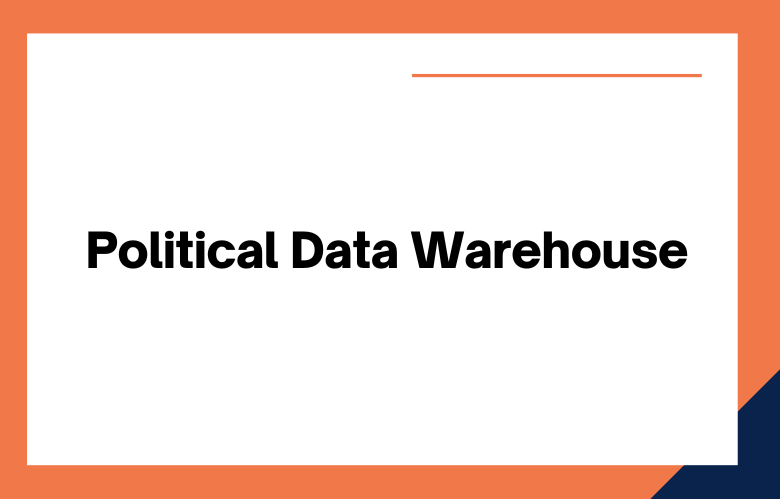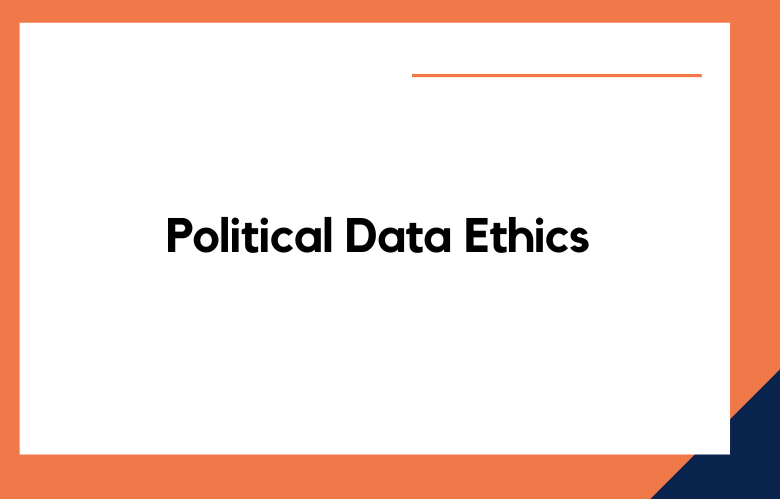A data warehouse is a critically important piece of software for any business, especially for companies in the political arena. Political data warehouses must handle vast amounts of data providing users with quick and easy access to the information they need.
We’ll discuss best practices for setting up and using a political data warehouse.
We’ll examine some of the market’s most famous political data warehousing solutions.
To make sound business decisions, companies must access accurate and timely data.
The Political Data Warehouse is a centralized system that allows businesses to collect and analyze data from various sources to understand political trends better.
A well-designed data warehouse can help businesses improve their decision-making process by reducing the time it takes to get information, increasing the accuracy of the information, and enhancing communication within the organization.
We discuss some best practices for designing a political data warehouse.
What is Data Warehouse?
Data Warehouse is a database used for data analysis and decision-making and supports the information that businesses and organizations need. Data warehouses store data from multiple sources and provide a central location for data management and analysis.
A data warehouse stores and analyzes data from multiple sources. Businesses often use data warehouses to understand their data better and make better decisions.
- A data warehouse is a repository for electronic data.
- It can store data from multiple sources and in various formats.
- Data warehousing can be used to create reports and analytics that can help organizations make better decisions.
A data warehouse collects data from multiple sources designed to support decision-making. It can store data from disparate sources in an easily accessed and analyzed format. A data warehouse can provide insights otherwise hidden in the mass of data.
Data warehouses are central repositories of integrated data from one or more disparate sources. They serve as a point for the data, making it possible to consolidate information from multiple sources into a single view. Data warehouses provide a centralized location for data analysis and decision support.
What is Political Data Warehouse?
Political Data Warehouse is a research tool that allows users to access a variety of data sets related to politics and policy. The warehouse consists of a database collection that contains information on everything from elections to public opinion polling.
Political Data Warehouse is a powerful new tool for analysts, consultants, and students. It gives users easy access to unparalleled data on politicians, elections, interest groups, and more. Political Data Warehouse is the most comprehensive and up-to-date source for political information.
Political Data Warehouse is a data management system that allows users to store and query political data. It provides a central repository for political data, allowing users to access and analyze data from multiple sources. Political Data Warehouse is designed to help users understand and make sense of complex political data.
Political Data Warehouse is a powerful tool for tracking and analyzing political data. With Political Data Warehouse, you can:
- Track and analyze political data
- Find and compare candidates
- Evaluate campaign performance
Best Practices in Business Intelligence and Political Data Warehouse
- Understand the different types of data and data warehouses
- Choose the correct type of data warehouse for your needs
- Collect and cleanse your data
- Load your data into the data warehouse
- Use BI tools to analyze and report on your data
- Use your findings to improve your business or political strategy
- The data warehouse should be designed for performance
- Extract, Transform, and Load (ETL) processes must be automated as much as possible
- The data warehouse should be designed for change
- Star schema design is the best practice for data warehouses
- Fact tables should include surrogate keys
- Dimension tables should consist of natural keys where possible
- Denormalization is often necessary for data warehouses
- The data warehouse should be designed for security
- Understand the different types of data
- Organize your data for easy access and analysis
- Use the right tools to analyze your data
- Filter your data to get insights that are relevant to you
- Share your findings with others in your organization
- Act on the insights you’ve gleaned from your data
- The data warehouse should be designed for performance
- The data warehouse should be designed for flexibility
- The data warehouse should be designed for manageability
- The extract, Transform, and Load (ETL) process must be automated as much as possible
- Star schema is the best design for the business intelligence data warehouse
- Fact tables should be at the center of the star schema
- Dimension tables should surround the fact table
- Slowly Changing Dimensions (SCD) must be implemented to handle updates to dimension tables
- Understand the different types of data and data warehouses
- Choose the correct type of data warehouse for your needs
- Configure your data warehouse for optimal performance
- Load your data into the warehouse
- Extract insights from your data
- Use the right tools to analyze your data
- Share your insights with others
- Understand the different data types and how they use in business intelligence (BI) and political data warehouse (PDW)
- Identify the various sources of data for BI and PDW
- Select appropriate tools and technologies for data acquisition, preparation, warehousing, analysis, and reporting
- Implement a dimensional model for BI and PDW
- Deliver timely information to support fact-based decision making
- Protect the privacy of individual data while ensuring its integrity and security
- Manage change effectively to ensure that BI and PDW remain relevant in an ever-changing environment
- Understand the different types of data warehouses and their purposes
- Understand the different ways to collect and analyze data
- Use data profiling techniques to understand your data better
- Choose the right business intelligence tools for your needs
- Set up a secure data warehouse environment
- Use advanced analytics to gain insights into your data
- Understand the different types of data warehouses
- Understand the other functions of a data warehouse
- Choose the correct type of data warehouse for your business
- Implement a data warehouse in your business
- Extract value from your data warehouse
Conclusion
Political Data Warehouse is a robust process for understanding the electorate. It can provide insights that help campaigns target specific voters, understand how people are likely to vote, and determine which messages will resonate with different groups of voters.
If you’re looking to implement a Political Data Warehouse or improve your current data warehouse solution, our team of experts can help.
Contact us today for Political Data Warehouse Consulting, and let us show you how we can help your campaign win!
One way to get in touch is by filling out our online form on this site or give us a call at
+91 9848321284. Let’s work together today!











